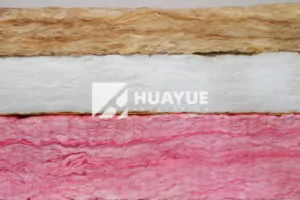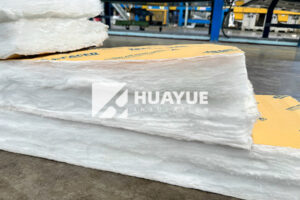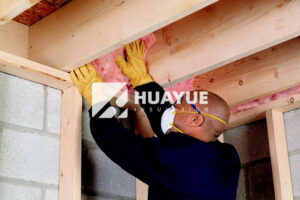What Is Fiberglass Insulation Made Of?
Ever looked at that fluffy pink or yellow stuff in an attic and wondered what it actually is? You’re not just looking at cotton candy; you’re looking at one of the most common and effective insulation materials.
Fiberglass insulation is primarily made from sand and recycled glass. These materials are melted down at extremely high temperatures and then spun into very fine, flexible glass fibers. A binder is added to hold these fibers together, creating the familiar batts, rolls, or loose-fill insulation.
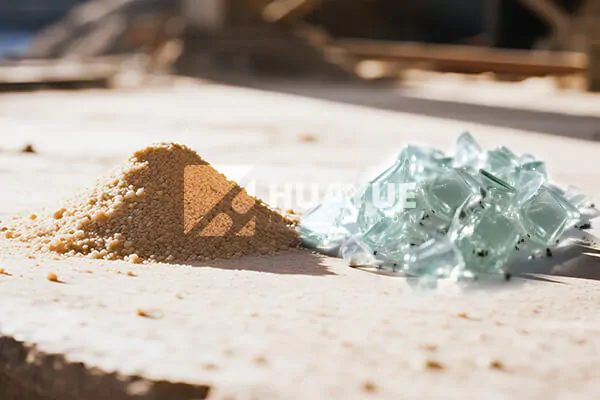
Understanding what’s in your walls is a key part of making informed decisions for your home or construction project. As a company with a heritage in manufacturing insulation that dates back to 1998, we at HUAYUE have a deep understanding of these materials. We’ve seen how quality ingredients and a precise manufacturing process create a product you can trust. Let’s pull back the curtain on how this incredible material is made and how it works to keep you comfortable.
How Is Fiberglass Insulation Made?
It seems almost magical that sand can be turned into a soft, insulating blanket, doesn’t it? The process is a fascinating blend of raw power and precise engineering.
The manufacturing process involves melting sand and recycled glass at about 2500°F (1370°C). This molten glass is then spun into thin fibers, much like making cotton candy. A binder is sprayed on to hold the fibers together, and the material is cured in an oven before being cut to size.
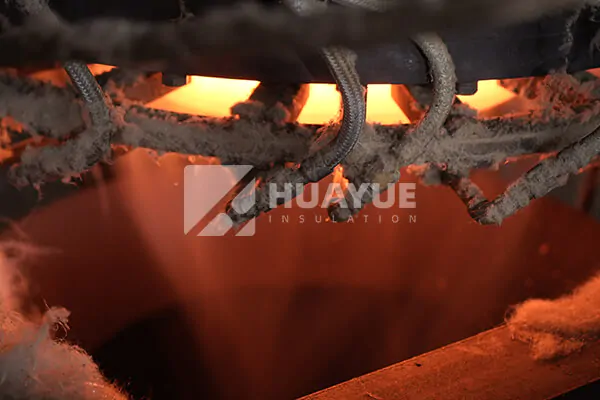
A Deeper Look at the Production Line
Having overseen production lines for decades, I can tell you the process is quite remarkable. It all starts with a precise recipe.
-
Batching and Melting: We begin by mixing the primary raw materials—silica sand, soda ash, limestone, and a significant amount of recycled glass cullet. Using recycled glass not only makes the process more sustainable but also reduces the energy needed for melting. This mixture is fed into a massive, high-temperature furnace where it becomes a molten liquid.
-
Fiberizing: This is where the magic happens. The molten glass flows into a rapidly spinning device, like a centrifuge, that has thousands of tiny holes. As it spins, the liquid glass is flung through the holes, creating incredibly fine filaments. This is known as the rotary spin process.
-
Binder Application & Mat Forming: As these fibers are created, a thermosetting resin binder is sprayed onto them. This binder is what gives the insulation its color and helps the fibers stick together. The coated fibers then fall onto a moving conveyor belt, forming a continuous, thick mat of insulation.
-
Curing and Finishing: The mat moves through a large curing oven, which bakes the binder and gives the insulation its final strength and shape. After the oven, the insulation is cooled, trimmed to standard widths, and either cut into batts or packaged into rolls. For loose-fill insulation, the material is processed differently, resulting in small, fluffy pieces.
How Does Fiberglass Insulation Work?
You’ve put it in your walls, but how does that fluffy material actually stop the winter cold from getting in? The science is surprisingly simple and very effective.
Fiberglass insulation works by trapping millions of tiny air pockets between its glass fibers. This trapped air is a poor conductor of heat, which dramatically slows down the transfer of heat from the warmer side of a wall to the colder side, keeping your home comfortable.
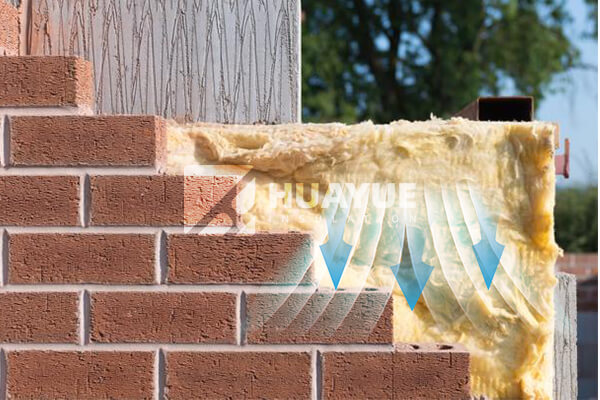
The Science of Slowing Heat Transfer
Heat moves in three ways: conduction, convection, and radiation. Fiberglass insulation is designed to effectively combat the first two.
-
Conduction: This is heat transfer through direct contact. Since the glass fibers are very fine and don’t touch each other much, there are very few pathways for heat to travel through the solid material itself. Glass is also not a great conductor of heat to begin with.
-
Convection: This is heat transfer through the movement of air or liquid. This is the primary mechanism fiberglass insulation targets. The dense web of fibers creates countless tiny air pockets. Air itself is a fantastic insulator, but only if it’s held still. The fiberglass fibers effectively stop the natural convection currents (the circulation of warm air rising and cool air sinking) from occurring within your wall cavities.
The effectiveness of insulation is measured by its R-value. The "R" stands for resistance to heat flow. The higher the R-value, the better the insulation’s performance. The thickness and density of the fiberglass insulation determine its R-value. A thicker batt will have more trapped air and therefore a higher R-value. This is why it’s so important not to compress insulation during installation, as that squeezes out the air pockets and reduces its effectiveness.
What Are the Benefits of Fiberglass Insulation?
Beyond just keeping your house warm or cool, what are the other advantages of using fiberglass? When you choose an insulation material, you’re investing in more than just temperature control.
Fiberglass insulation is highly beneficial due to its excellent thermal performance, affordability, and natural fire resistance. Additionally, it provides sound dampening, is made with recycled content, and is resistant to moisture, mold, and pests, ensuring long-term durability.
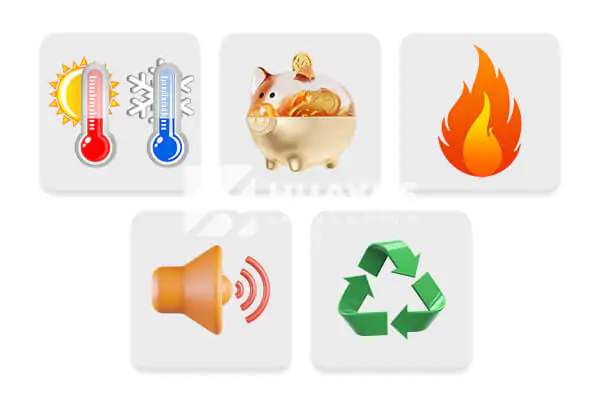
A Multifaceted Material
From our perspective as a global supplier, we see clients choose fiberglass for a wide range of reasons beyond its primary function. Here’s a breakdown of the key benefits we consistently highlight:
| Benefit | Description |
|---|---|
| Energy Efficiency | By effectively slowing heat transfer, it reduces the workload on your HVAC system. This leads to lower energy consumption and significant savings on your utility bills. |
| Cost-Effectiveness | Compared to many other insulation types, fiberglass offers one of the best performance-to-cost ratios on the market. It’s an affordable way to meet and exceed building code requirements. |
| Fire Safety | The glass fibers are inherently non-combustible and won’t burn. This adds a critical layer of safety to any building, slowing the spread of a potential fire. |
| Acoustic Control | The same structure that traps air to block heat also works to absorb sound waves. It effectively reduces noise transmission between rooms and from the outside. |
| Sustainability | Modern fiberglass insulation contains a high percentage of recycled glass (often 30-50%). Its use also lowers a building’s carbon footprint by reducing energy needs for heating and cooling. |
| Durability | Fiberglass does not rot, decay, or settle over time. It is also inorganic, so it does not support mold growth and is not a food source for pests. |
These combined benefits make it a versatile and reliable choice for everything from a small home renovation to a large-scale industrial project.
How Is Fiberglass Insulation Installed?
So you have the rolls or batts, now what? Proper installation is absolutely critical to getting the performance you paid for.
Fiberglass insulation is typically installed by cutting batts to fit snugly within the cavities of walls, floors, or ceilings without being compressed. The batts are placed between studs or joists, and if faced, the paper or foil vapor retarder is stapled to the framing members.
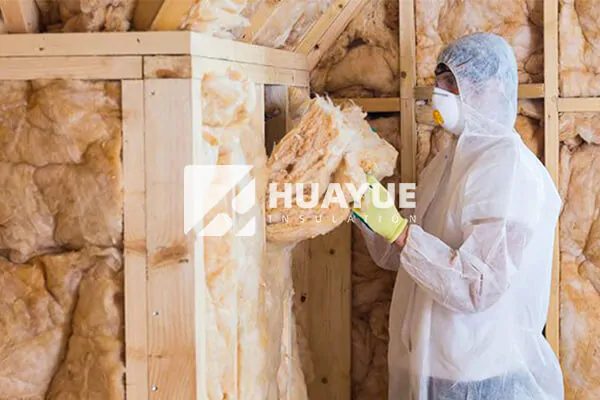
A Step-by-Step Guide to a Quality Job
A poor installation job can cut the effectiveness of insulation by half, so attention to detail is key. Here’s the process a professional follows:
- Preparation and Safety: First, put on your Personal Protective Equipment (PPE). This includes gloves, long sleeves, safety glasses, and an N95 respirator mask to prevent irritation from the fibers.
- Measure and Cut: Measure the height and width of the cavity. Cut the insulation batt about ½ to 1 inch wider and longer than the space to ensure a snug "friction fit." A sharp utility knife and a straightedge work best for clean cuts.
- Fit into Cavity: Gently push the batt into the wall, floor, or ceiling cavity. It should fill the entire space from top to bottom and side to side without any gaps. It’s crucial not to compress or jam the insulation in, as this reduces its R-value.
- Work Around Obstacles: When you encounter wires or pipes, split the insulation batt in half. Tuck one half behind the obstacle and lay the other half in front of it. For electrical boxes, cut a snug hole in the batt to fit around it.
- Secure the Facing: If you’re using faced insulation, the facing acts as a vapor retarder and must be installed correctly. In most climates, it should face the warm-in-winter side of the house (the interior). Use a staple gun to attach the paper flanges to the face or the inside edge of the wood studs.
Is Fiberglass Insulation Safe for Homes?
With all this talk of glass fibers, is it actually safe to have in your house? It’s a question we get all the time, especially from families.
Yes, fiberglass insulation is considered safe for homes when it is properly installed and left undisturbed. The fibers pose a risk of irritation during installation, but once sealed behind drywall, they are not airborne and do not impact indoor air quality.

Addressing Health and Safety in Your Home
Concerns about insulation safety are completely understandable. In my experience, particularly when supplying materials for residential projects here in places like Idaho, homeowners want total peace of mind. The main concerns are about airborne fibers and chemical content.
Once installed and sealed behind a wall finish like drywall, fiberglass poses no threat. The fibers are stable and not released into the living space. The risk of exposure is almost entirely limited to the installation process, which is why wearing proper PPE is so important. Any temporary skin, eye, or throat irritation from airborne fibers during installation subsides after exposure ends.
Furthermore, health agencies have studied glass wool fibers extensively. In 2001, the International Agency for Research on Cancer (IARC) reclassified insulation glass wool from a "possible human carcinogen" to "not classifiable as to its carcinogenicity to humans." Modern fiberglass insulation also no longer uses formaldehyde as a binder, a change made years ago to improve indoor air quality. Today’s products are a safe, stable, and effective way to make your home more comfortable and energy-efficient.
Conclusion
In essence, fiberglass insulation is a simple yet brilliant material made from sand and recycled glass. It offers a powerful combination of thermal performance, safety, and affordability for any home or building.
As a trusted manufacturer and exporter since 1998, HUAYUE provides world-class glass wool and other insulation materials. We’re here to deliver a one-stop, customized solution for your project’s needs.
You may also be interested in:
Ready to Get Started?
Get in touch with our experts for personalized solutions tailored to your needs.
Get Free QuoteLatest Articles
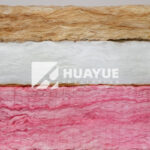
Eco Batt Insulation: What You Need to Know?
Dec 12, 2025
Let's Work Together
Ready to take your business to the next level? Get in touch with our team of experts and let's discuss how we can help you achieve your goals.
Get Free Solutions
